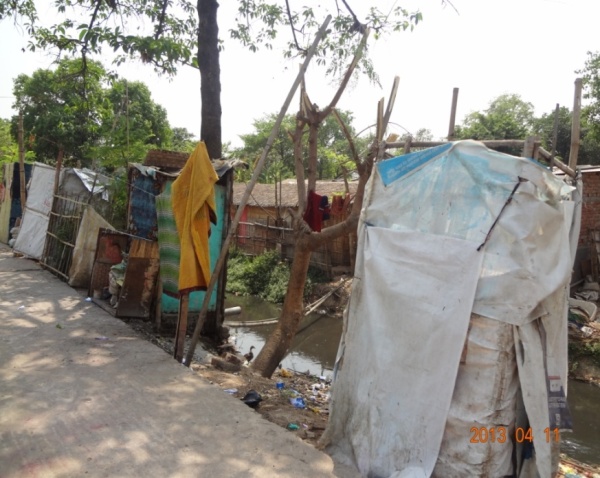By Suman Bhanoo, PRIA
We all are aware of the recent rape in Delhi where a young girl of a basti was subjected to major atrocities in the unguarded public toilet near her basti. This is by no means a stand-alone case and most of the urban poor – especially women and girls have to deal with various issues (health, security and safety, loss of dignity to name few) either due to lack of facilities or ill-equipped services in their slums bastis.
According to United Nations Human Rights, it is estimated that 2.6 billion people live without proper sanitation. Over 1.1 billion people have no sanitation facilities. On the other hand, WHO-UNICEF Joint Monitoring Programme (JMP) estimates that 80 percent of the world’s urban population has access to adequate sanitation, compared to only 39 percent of the rural population. However it is a known fact that the health impact of lack of access to sanitation is far worse in urban areas than in rural areas, due to higher density of population.
Slums of Bihar, where PRIA is initiating activities for Strengthening Civil Society Voices on Urban Poverty, are no exception to the above situation. Besides the usual problems of slums like potable water, sewerage facility, land rights, street light, BPL card and voter card, Ketari slum of Patna is facing huge problem related to sanitation facilities. According to the slum dwellers, many people prefer plastic bags, sewerage lines, road sides, railway tracks, nearby forest areas, behind bushes, field, streets or other places for defecation that do not provide adequate privacy, safety, dignity and hygiene. And above all these places are not secure for girls and women. Lack of toilets affects women and girls in particular; it makes them vulnerable to rape and other forms of gender-based violence. Women and girls face threats of sexual assault when they have to walk long distances to sanitation facilities, especially at night.
Absence of household toilets not only generate element of myriad fears but also pollutes environment and water sources. It is known that world over, millions of children are left malnourished, physically stunted and mentally disabled by excreta-related diseases. To combat with these issues, residents of slums have formed temporary toilets near to their respective households. Now, after prolonged struggle and wait, in coming month, the slum residents going to get “six public toilets” in their slums. But main agenda is maintenance of “public toilets”. As the adjoining slum “Adalatganj Slum” is facing same issues related to maintenance. In adjacent slum toilet is in worse condition and to avail its services each time residents have to pay 3Rs/. It is a huge amount for whole family. So either they are forced to use ill maintained toilets or they have to defecate in open. Ms. Arzoo Devi from Adalatganj stated every day brings the same problem. For middle class society concept of defecation doesn’t deserve any consideration but for us this simple act of defecation takes thoughtful planning. Being a woman it is matter of dignity, health and safety.
In June 2011, UN Secretary-General Ban Ki-moon launched the “Sustainable Sanitation: Five-Year Drive to 2015” a push to speed up progress on the Millennium Development Goals of improving global sanitation by 2015 and to ensure sanitation for all. Let see how far it goes….


.jpg)

No comments:
Post a Comment